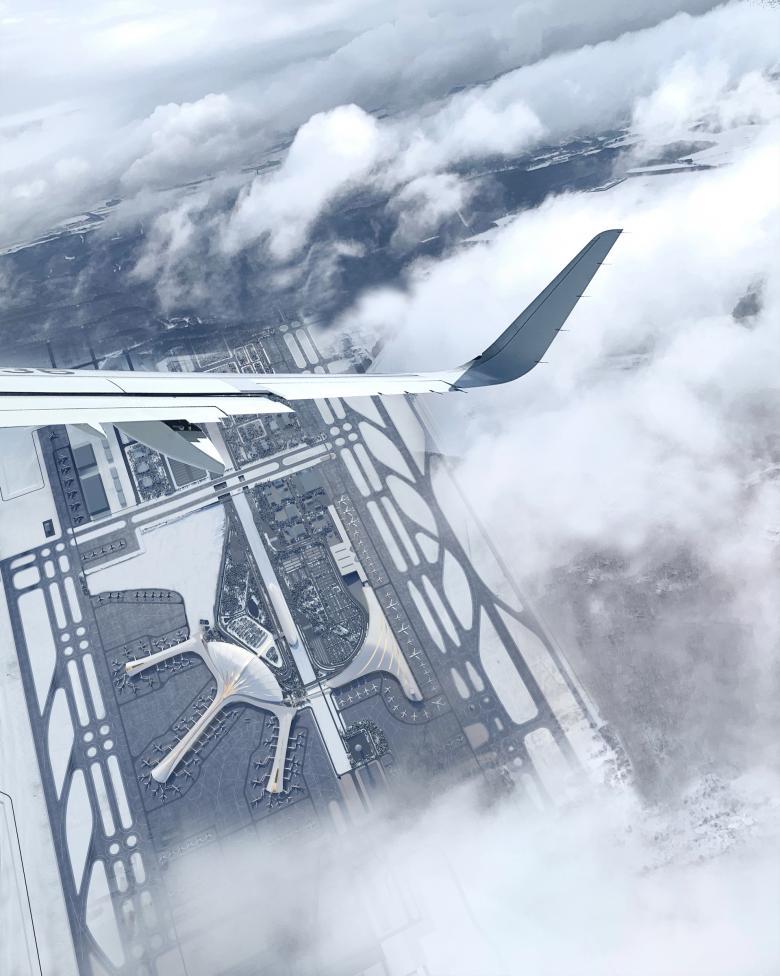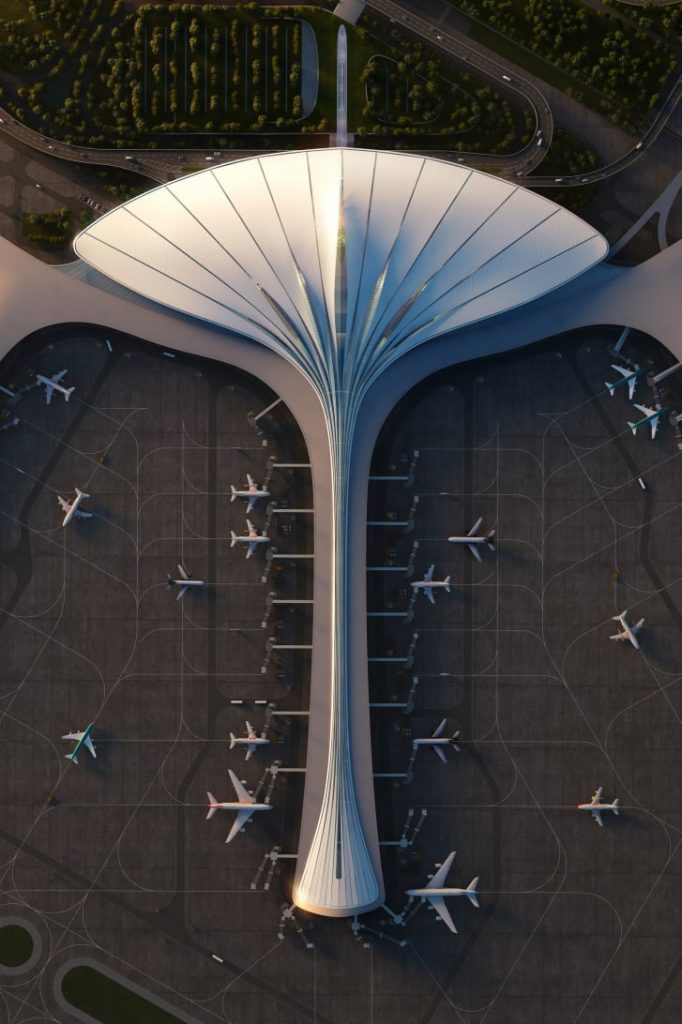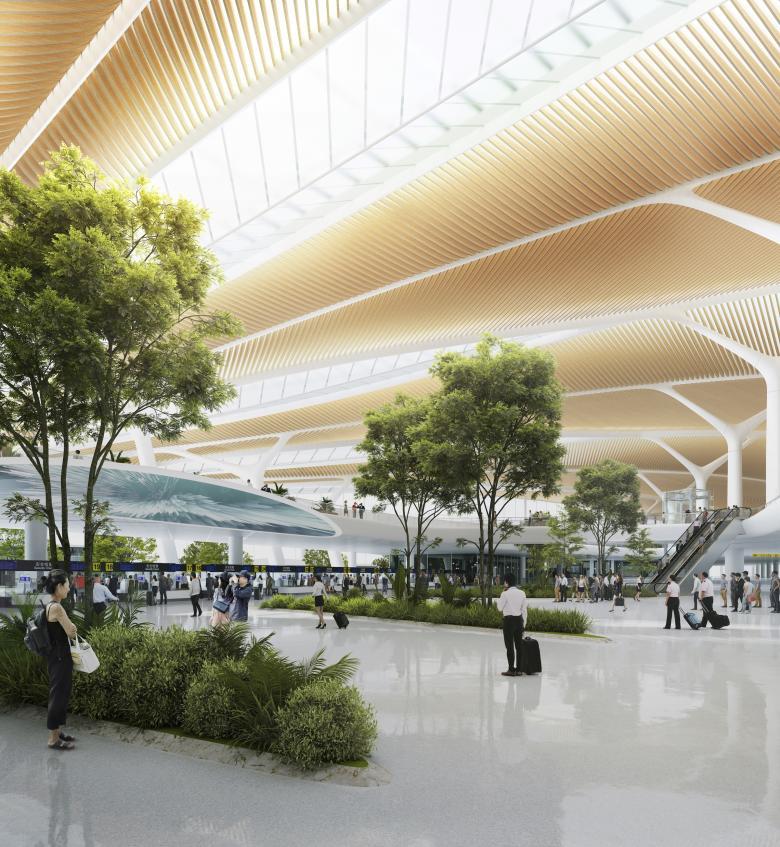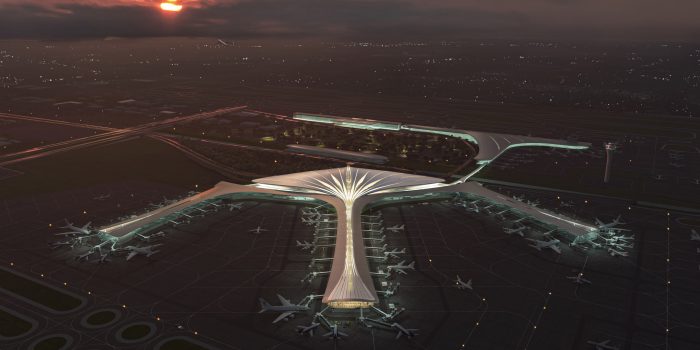Renowned Chinese architect Ma Yansong, from MAD Architects, has revealed the design for a tranquil new airport terminal in Changchun, Jilin province. The firm won an international competition to lead the expansion of Longjia International Airport.
The airport terminal, which will occupy a large space of nearly 2.9 million square feet, will be shaped like a fan and will be linked to the two existing terminals. Additionally, it will have a direct connection to downtown Changchun through road and subway.
Upon completion, the airport is expected to handle an annual passenger count of 22 million, although no opening date has been confirmed yet. The design is said to resemble a “floating feather” when viewed from above.

Created in collaboration with China Airport Planning & Design Institute and the Beijing Institute of Architectural Design, the proposal is amongst a slew of eye-catching new — or expanded — airports opening throughout China. Overseen by each worldwide and home architects, not too long ago accomplished initiatives embrace Beijing’s starfish-esque Daxing International Airport, which was led by the famed Zaha Hadid Architects, and Chengdu New Tianfu International Airport, whose form nods to a legendary sunbird.

The new site consists of 177.6 hectares with a building area of nearly 270,000 square meters and is located in Changchun, a city well-known as the international, regional hub in Northeast Asia with a population of 23 million. Once completed, the terminal will boast 54 aircraft gates and host 22 million passengers per year.
Upon entering the new structure, passengers will have a view of a large, uninterrupted ground floor that provides direct access to the airport’s high-speed rail, subway, road, and all methods of transportation.
Nature-inspired facets of the design embrace an indoor backyard and timber, in addition to a wood ceiling that nods to the encompassing forests. The flowing, curvilinear aesthetic is in step with MAD Architects’ repertoire, with the agency’s buildings typically knowledgeable by conventional Chinese language “shanshui” (or “mountain and water”) panorama work.

Furthermore, the internal garden system will be fed by natural light brought into the departure hall through the feather-shaped roof. “The structural system continues the rhythm of the building’s skin to express the logic of force transmission, which converges toward the center together with the skylight, guiding the direction of passengers naturally,” concluded the architects in their posts. The unique wooden ceiling also combines with the structure, skylight, and sunlight to create a dynamic interior space, all within a shape as light and airy as a feather floating in the breeze.”
In accordance with the Transportation Community Planning Define, issued by China’s authorities in early 2021, the nation aims to have 400 airports in use by 2035 — a major soar from the 241 working in 2020.


